Papers by Raymond S Solga
Lucian of Samosata was one of the most prolific and original writers of the Second Sophistic. His... more Lucian of Samosata was one of the most prolific and original writers of the Second Sophistic. His writings have a manifestly comedic tone while at the same time addressing the most serious of subjects. Modern scholars have shied away from pinning Lucian down to one school of philosophy or religion, possibly because of the mocking tone he takes in his writings. However, Lucian shows a distinct pattern of favoring the Epicurean school of thought even if he does not profess himself to be an Epicurean. The way he mocks religion has Epicurean underpinnings and even when he mocks Epicureans along with the other schools of philosophy his criticism of them is lighter and often from an Epicurean point of view. Understanding Lucian as someone who is sympathetic to Epicureanism effects how one views his writings as well as how one understands how Epicurean thought evolved in the Roman Empire.
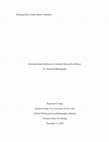
This is an annotated bibliography of online databases that can be used for academic research in... more This is an annotated bibliography of online databases that can be used for academic research in history. It can serve as a guide for research or collection development in history. Chapter I discusses issues related to online research and history research, and the reasons for doing this study. Topics discussed include the definition of history as a discipline, changes in information seeking practices, problems finding quality sources online, how information professionals can address these issues, the goal of this study, which is to create a guide to online history databases, the justifications for this study and research questions considered in this study. Chapter II is a literature review, which covers history and social science subject guides, articles on evaluating pay databases, articles on evaluating free online content, articles that compare print and online resources and a summary of pertinent issues raised in these sources. Chapter III describes the methodology used in this paper, including an overview of the paper, selection criteria for the annotated bibliography, and the format of the annotated bibliography. Chapter IV contains the annotated bibliography, which is divided into sections according to the type of source. These types are: pay journal databases; open access journal databases; pay reference and primary source databases; and free reference and primary source databases. Chapter V is a summary of findings and conclusions. After Chapter V there is a works cited and title index.
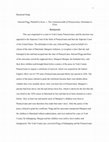
This case originated in a court in York County Pennsylvania, and the decision was appealed to th... more This case originated in a court in York County Pennsylvania, and the decision was appealed to the Supreme Court of the State of Pennsylvania and then the Supreme Court of the United States. The defendant in this case, Edward Prigg, acted on behalf of a citizen of the state of Maryland, Margaret Ashmore, to recapture a slave that she said belonged to her and had escaped into the state of Pennsylvania. Edward Prigg and three of his associates seized the supposed slave, Margaret Morgan, her husband Jerry, and their three children and brought them before a justice of the peace in York County Pennsylvania to request a certificate of removal, which was required by the federal Fugitive Slave Act of 1793 and a Pennsylvania personal liberty law passed in 1826. The justice of the peace refused to grant the certificate because there were doubts about whether they were actually slaves. Jerry was born free in Pennsylvania. Margaret’s parents had been slaves, but she had always been free, which is shown by the fact that she was listed in the 1830 census in Maryland as free and had never been claimed as a slave before. Also, at least one and maybe more of Margaret’s children were born in Pennsylvania and were therefore free under that state’s laws. After the justice of the peace refused to grant the certificate, Prigg and his associates transported Margaret and the children to Maryland without authorization, and were indicted by a jury in York County for kidnapping. Morgan and her children were sold to slave traders and disappeared. The York County jury convicted Prigg of kidnapping and the Pennsylvania Supreme Court affirmed the decision. The case was appealed to the United States Supreme Court.
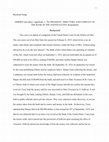
This case is an appeal of a judgment of the United States Court for the District of Ohio. The cas... more This case is an appeal of a judgment of the United States Court for the District of Ohio. The case arises out of an Ohio State law passed on February 8, 1819, which levies a tax on banks, individuals and companies that transact business within the State of Ohio “without being allowed to do so by the laws thereof.” The Bank of the United States was operating in violation of this law, which went into effect on September 1, 1819, and was held liable for an annual tax of $50,000 on each of its offices, totaling $100,000, and State Auditor Ralph Osborn was authorized to seize the money from the bank. On September 14, 1819, an injunction was issued by the court prohibiting Osborn and his employee John L. Harper from collecting the money, and a subpoena was issued, both before the money had been collected. In violation of the injunction, Harper forcibly took $100,000 from the bank, and delivered it to State Treasurer H.M. Curry, or to Osborn, both of whom were aware of the illegal seizure and did not confirm the amount they received. Curry kept the money until he was succeeded as State Treasurer by S. Sullivan. A suit was brought by the bank, making Osborn, Harper, Curry and Sullivan defendants in the case, both as public officials and as private citizens. They were ordered to make discovery, to not use the money taken from the bank and to restore said money to the bank. In discovery, Curry admitted that Harper delivered $98,000 dollars to him around the 20th of September, 1819, and that he was informed that it was from a tax levied on the Bank of the United States. Curry kept the money aside, and it passed into the possession of Sullivan upon assuming the office of Treasurer. Sullivan denied any knowledge of how the money was collected, and he has no private interest in the money, holding it only as treasurer and admitting knowledge of its source and the Bank’s claim on the money. The United States Circuit Court for the District of Ohio ordered the defendants Osborn and Harper to pay back the sum of $100,000 plus $19,830 in interest. The decision was appealed to the Supreme Court of the United States.

In response to critics of his administration George W. Bush famously dismissed their judgment on ... more In response to critics of his administration George W. Bush famously dismissed their judgment on the grounds that future historians decades from now would decide whether he made the right decisions in Iraq. While the full effects of the Iraq war have not yet been realized, the gravity of the situation demands that we try to understand it now. Limited access to classified information, political motivations, and the continued U.S. occupation of Iraq all contribute to the lack of historical perspective that is inevitable when studying recent and current events. It is important to keep this in mind, admitting uncertainty while still trying to draw conclusions from the available evidence. The invasion of Iraq was one of the most controversial foreign policy decisions in recent times. Scholars from practically every discipline are addressing issues related to the causes and consequences of the invasion. Though the whole truth will probably never be known scholars have much to say about the factors leading to the war.
The Yalta Conference lasted a week, from February 4 until February 11, 1945, and was the second ... more The Yalta Conference lasted a week, from February 4 until February 11, 1945, and was the second and final face to face meeting of Franklin Delano Roosevelt, Winston Churchill, and Josef Stalin, The principal subjects discussed were Poland’s boarders and future elections, German boundaries and war reparations, the occupation of Germany, the conditions of Soviet participation in the war against Japan, procedure, and voting rights in the future United Nations organization. Since the conference has taken place it has been one of the most talked about meetings in history. There has been both criticism and praise for the outcomes of this summit, and it is likely that historians will be debating this topic for the foreseeable future.

The death of Cleitus took place at the city Maracanda, known to the Greeks as Samarkand, in Sogd... more The death of Cleitus took place at the city Maracanda, known to the Greeks as Samarkand, in Sogdiana, during the year 328 B.C.E. Almost all of the sources place the symposium during the summer of that year, except for Hammond who claims it was autumn. Alexander was probably born on July 20, 356, so the death of Cleitus probably happened around his 28th birthday. By this time in his life he had become the king of Persia, having defeated Darius twice. Two years earlier he had Philotas and his father Parmenion executed for supposedly being involved in a plot to kill him. It could be argued that this made Alexander more wary of plots against him. Also, he had lost an experienced general in Parmenio. He was in the process of taking out the scattered remnants of resistance that flared up in the remote northern region of what was the Persian Empire, which was taking a long time. The army was working under harsh conditions, marching through a very mountainous region, at a time when Alexander was hoping to be able to move on to India. However, he could not do that until he was sure his supply line would stay open, which meant defeating resistance in the region.
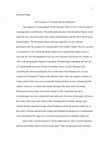
The conquest of Constantinople by the Ottoman Turks in 1453 is seen by many as a turning point in... more The conquest of Constantinople by the Ottoman Turks in 1453 is seen by many as a turning point in world history. The battle marks the end of the Byzantine Empire, which lasted for over a thousand years in the eastern Mediterranean after the fall of the Western Roman Empire. The Byzantine Empire had been weakened over the centuries, particularly after the conquest of Constantinople in the Fourth Crusade. The city was later re-conquered in 1261, but the Byzantine Empire never regained the military power it once had. By 1453 the population of the city was a fraction of its former size. Finally, in 1453, with the Byzantine Emperor Constantine XI Palaeologus controlling only the city of Constantinople and some territory in southern Greece, and the Ottoman Turks controlling the land surrounding the city on both sides of the Bosporus, the city was conquered by Mehmed II, Sultan of the Ottoman Turks. After the conquest a number of Greek scholars fled to the west or joined the Ottoman Sultans at court, influencing both cultures. However it is untrue that scholars fleeing at this point started the Italian Renaissance because there were Greek scholars in Italy long before the fall of Constantinople; but more scholars did come afterward. The focus of this paper will be on the events of the siege itself, which marks a turning point in military strategy when cannons became important in siege craft by helping to defeat the greatest walled city in the world. I will also talk about the changes that Mehmed II introduced to Constantinople in the aftermath of the siege in its conversion from Byzantine to Ottoman capital city.

New York State played a pivotal role in the American Revolution. It’s central location along the ... more New York State played a pivotal role in the American Revolution. It’s central location along the east coast of North America, it’s status as the second most populated city in North America, and it’s deep water port which commanded access to the Hudson River made New York City an important strategic target for the British and it “was the primary British stronghold in America for the next seven years. No other American city was held so long by the British Army.” (Palf, v) Of the thirteen colonies that formed the United States, New York is considered by many historians to have had the highest percentage of loyalists. It was also the most diverse colony, because of the large Dutch population remaining from when it was New Amsterdam, immigration from other European countries and New York’s extensive trade network with the Americas, Africa and Europe. In this paper, I will examine the political climate in New York during the American Revolution. The questions I will address are: What were the factors that led New Yorkers to choose a side in the conflict, or to stay neutral? Which counties sided primarily with the patriots and which with the British? What role did New York play in relation to the other colonies? Why was New York slower to reject British rule and embrace independence than other colonies? What was the significance of revolutionary committees?
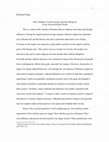
This is a study of the reaction of Roman elites to religious innovation and foreign influences. ... more This is a study of the reaction of Roman elites to religious innovation and foreign influences. During the imperial period foreign religious influences played an important role in Roman life and the Roman elite had a somewhat ambivalent view of them. Everyone in the empire was required to make public sacrifices to the emperor and the gods of the Roman state. This can be seen as a loyalty test of sorts, but people were allowed to take part in other religious activities besides their official obligation. Generally foreign religious practices were tolerated as long as they did not prevent people from worshiping the official state gods, especially the emperor. However, the practice of magic was illegal under Roman law, even though the vast majority of Romans sought out some kind of magical assistance. Educated Romans were critical of what they considered superstition, which was generally considered excessive fear of the gods, but thought it only proper to perform a reasonable amount of sacrifices to the gods in order to show them respect. “In Rome, religio (national and authentic) was readily contrasted with superstitio (exotic and suspect).” I expect to find a variety of opinions, positive, negative and mixed, on various religious practices. Although innovation in religion was generally seen in a negative light certain practices were approved of despite their novelty.
After independence from Spain, Argentina and the rest of the independent Latin American states we... more After independence from Spain, Argentina and the rest of the independent Latin American states were briefly ruled by liberal regimes. However, for a number of reasons these regimes were overthrown by conservative caudillos who wanted to maintain the social hierarchy that existed in the colonial period.
Founded by Alexander the Great in 331 BC, “After the death of Alexander in 323 BC one of his gene... more Founded by Alexander the Great in 331 BC, “After the death of Alexander in 323 BC one of his generals, Ptolemy, killed Kleomenes [satrap of Egypt] and became ruler of Egypt himself, as satrap…” (McKenzie, 40) Ptolemy took the title of pharoh in 306 BC, and Alexandria was ruled by the Ptolemaic dynasty from 306 BC to 30 BC (McKenzie, 1). It was the capital of the last Hellenistic Kingdom, and became a province in the Roman Empire soon after the defeat of Marc Antony and Cleopatra at the battle of Actium in 31 BC. In this paper I will examine how change and continuity are manifested in this city from the time of Ptolemaic rule to its integration into the Roman Empire.
This is a paper that proposes the adoption of Electronic Reference Books in an academic library, ... more This is a paper that proposes the adoption of Electronic Reference Books in an academic library, accompanied by a Microsoft PowerPoint presentation titled "Introducing Electronic Reference Books to the Library’s Collection". The Library serves Jane Doe College, a large public university in the with a student population of over 18,000, of which approximately 14,000 are undergraduates and 4,000 are graduate students. There are 115 undergraduate majors, 80 masters programs, and 20 graduate certificate programs awarded by the institution. There is no on campus housing, so all students commute to campus. The university and library are located in Any Town, New York. Three quarters of the students are from New York State. The main source of funding comes from the New York State, but the library also receives grants and donations from alumni.
This project is an evaluation of a segment of the collection at East Rockaway Public Library. Ap... more This project is an evaluation of a segment of the collection at East Rockaway Public Library. Approximately one-hundred books between call numbers 973.89 and 973.921 (General History of North America - United States, from the end of the 19th century to 1960), were used. I used this segment of the collection because I am interested in history and I am fairly knowledgeable about the subject. The evaluation was done on based on the needs of the community, circulation rate, currency, bias, condition of the book and cost. Circulation data was available going back to 2004, and that is when it is measured from.
One of the most important aspects of librarianship is selecting materials to buy for the library... more One of the most important aspects of librarianship is selecting materials to buy for the library. Considering the vast amount of materials that are produced every year, it is not possible to look at every item that is being considered for purchase. Therefore it is important for librarians to look at reviews in library journals in order to judge their potential usefulness.

Collection analysis is an important aspect of collection development. It is an important factor ... more Collection analysis is an important aspect of collection development. It is an important factor in purchasing of new materials, weeding of old materials and future budget requests. There are several methods of doing this, using both qualitative and quantitative data. Prior to the widespread use of computers in libraries all usage statistics were collected manually, such as counting the number of times a book was taken out, how many people walked through the door and how many times a periodical had to be put back on the shelf, which are at best an approximations (Tenopir, 2005). With the arrival of new delivery formats, such as the e-book, electronic journal databases and electronic reference sources, methods of assessing the use of materials have progressed, but this has also created new challenges. Along with assessing what materials to purchase for the library, the other half of assessing a collection is deciding which materials to get rid of. Generally the library’s aim is to collect materials that are of use to the target audience, so weeding involves getting rid of whatever is not being used or is outdated. I will elucidate several use centered analysis issues which are discussed in current scholarly literature.
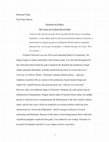
Friedrich Nietzsche was one of the most important thinkers of modernity. His biting critique of ... more Friedrich Nietzsche was one of the most important thinkers of modernity. His biting critique of culture and politics still resonates today. It is clear that throughout his life, Nietzsche believed that the goal of political life should be the production of high culture and great individuals, as Keith Ansell-Pearson writes in An Introduction to Nietzsche as Political Thinker “Nietzsche’s distinct political theory… [has an]… emphasis on political life as a means to the production of great human beings and culture”(63, Ansell-Pearson). His great question was, ‘what are we to become?’ However, there were different stages in Nietzsche’s thinking: his early period, heavily influenced by Schopenhauer, Wagner and his study of Ancient Greek culture; his middle period, in which he tries to commensurate the liberalization of the time with his cultural ideals; and his later years, which are marked by an extreme position which has been characterized as ‘Aristocratic Radicalism’, and his strongest criticism of western nationalism and liberalism. Because of this there is much disagreement about what kind of political programs would meet his goals, even within his own writing. Nietzsche set his goals for humanity and left it to us to figure out how to get there.
Without question, Spanish painters have been among the greatest artists in history. Paintings by... more Without question, Spanish painters have been among the greatest artists in history. Paintings by artists such as El Greco, Velasquez, Goya, Picasso, Dali, and Miro grace the walls of the finest museums across the globe, and it would be hard to imagine these museums without these paintings. With a cultural history as long and as rich as Spain has, it would be impossible to communicate effectively the entire history of Spanish art in a six to eight page paper. Though there are many extraordinary artists to choose from in Spain’s history, in this paper I will focus on two of Spain’s most influential artists: Francisco de Goya and Pablo Picasso. These two artists inspired or created many of the subsequent movements in the art world. They are rightly credited as the most important artists of their own lifetimes, and their impact on art can be seen even today.
The question at issue here is whether putting up a web site listing the names and personal inform... more The question at issue here is whether putting up a web site listing the names and personal information about doctors who provide abortions, labeling them “baby butchers” and crossing the name off on the list when the doctor dies is protected under the first amendment right to freedom of speech.
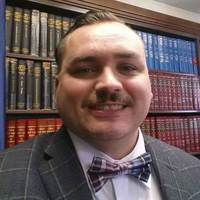




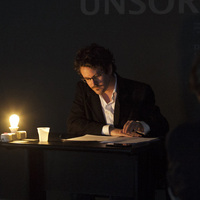

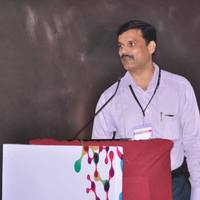

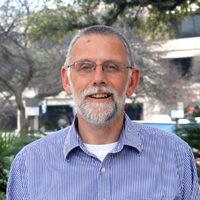

Uploads
Papers by Raymond S Solga